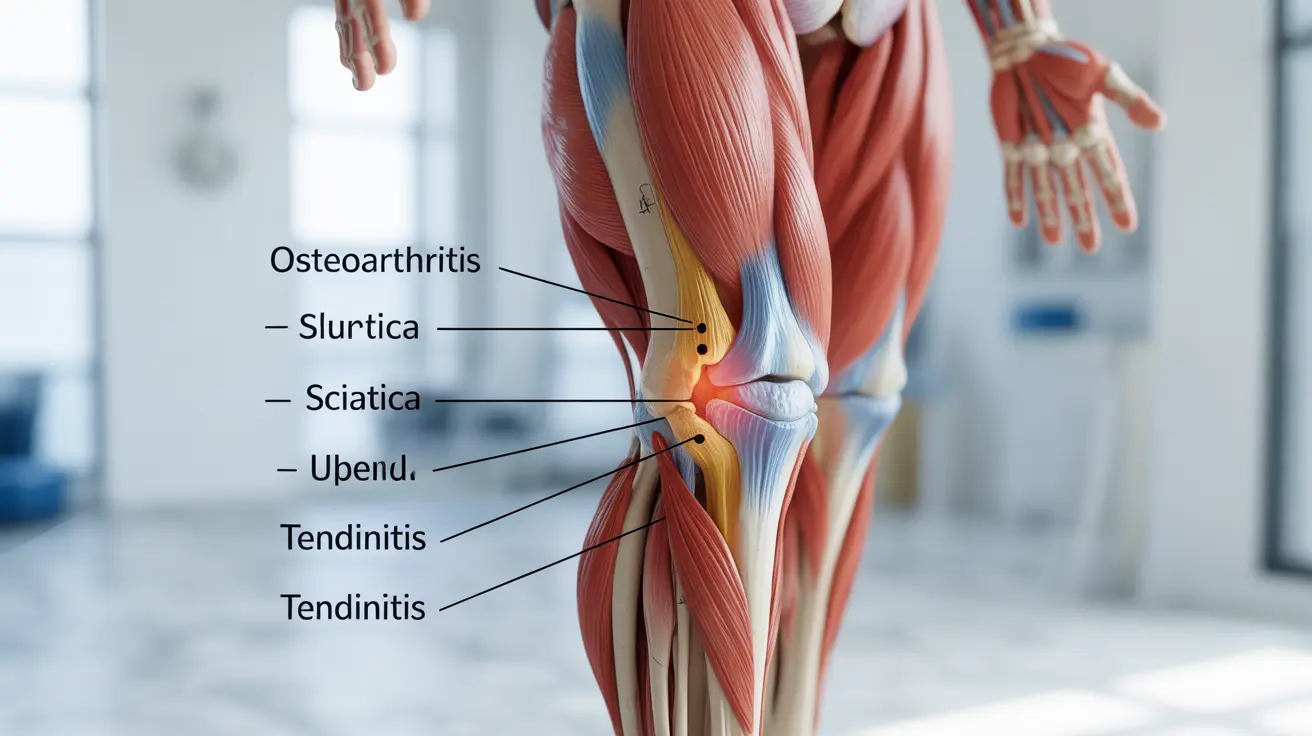Hip and leg pain can significantly impact your daily activities and quality of life. Whether you're experiencing a dull ache, sharp pain, or persistent discomfort, understanding the underlying causes and available treatments is crucial for managing your symptoms effectively. This comprehensive guide will help you identify common causes, explore treatment options, and know when to seek professional medical help.
Common Causes of Hip and Leg Pain
Hip and leg pain can stem from various conditions affecting muscles, joints, nerves, or bones. Understanding these causes is the first step toward proper treatment:
Musculoskeletal Conditions
- Osteoarthritis
- Tendinitis
- Bursitis
- Muscle strains
- Hip fractures
- Stress fractures
Nerve-Related Issues
- Sciatica
- Pinched nerves
- Peripheral neuropathy
- Herniated discs
Identifying Pain Patterns and Symptoms
Different conditions often present with distinct pain patterns and accompanying symptoms:
Arthritis Pain
- Stiffness, especially in the morning
- Pain that worsens with activity
- Reduced range of motion
- Joint swelling
Nerve Pain
- Sharp, shooting pain
- Numbness or tingling
- Pain that radiates down the leg
- Muscle weakness
Treatment Options and Management Strategies
Treatment approaches vary depending on the underlying cause and severity of symptoms:
Conservative Treatments
- Rest and activity modification
- Ice or heat therapy
- Over-the-counter pain medications
- Physical therapy exercises
- Gentle stretching routines
Medical Interventions
- Prescription medications
- Corticosteroid injections
- Physical therapy
- Surgery (in severe cases)
Prevention and Lifestyle Modifications
Many cases of hip and leg pain can be prevented or managed through lifestyle changes:
Exercise and Movement
- Low-impact aerobic activities
- Strength training exercises
- Flexibility work
- Proper warm-up routines
Daily Habits
- Maintaining a healthy weight
- Using proper posture
- Wearing supportive footwear
- Regular stretching
When to Seek Medical Attention
Certain symptoms warrant immediate medical evaluation:
- Severe pain following an injury
- Inability to bear weight
- Significant swelling or redness
- Fever accompanying pain
- Progressive weakness or numbness
- Pain that doesn't improve with rest
Frequently Asked Questions
What are the most common causes of hip and leg pain and how can I identify them?
The most common causes include arthritis, tendinitis, bursitis, muscle strains, and nerve conditions like sciatica. Each condition typically presents with specific symptoms - arthritis often causes morning stiffness and joint pain, while nerve issues may cause shooting pain or numbness.
How is hip and leg pain from conditions like tendinitis, arthritis, or bursitis usually treated?
Treatment typically begins with conservative measures like rest, ice/heat therapy, and over-the-counter pain medications. Physical therapy, exercise programs, and lifestyle modifications are often recommended. More severe cases may require medical interventions like corticosteroid injections or surgery.
What symptoms suggest that my hip and leg pain might be due to sciatica or a nerve problem?
Nerve-related pain often presents as sharp, shooting pain that radiates down the leg, accompanied by numbness, tingling, or muscle weakness. Pain may worsen with certain positions or movements and can affect the entire length of the leg.
Are there effective exercises or lifestyle changes to prevent or reduce hip and leg pain?
Yes, regular low-impact exercise, maintaining a healthy weight, proper posture, and regular stretching can help prevent and reduce pain. Specific exercises targeting hip and leg strength and flexibility, when done properly, can be particularly beneficial.
When should I see a doctor about hip and leg pain, and what diagnostic tests might be needed?
Seek medical attention if pain is severe, persists beyond a few weeks, follows an injury, or is accompanied by fever, significant swelling, or inability to bear weight. Diagnostic tests may include X-rays, MRI scans, CT scans, or nerve conduction studies, depending on suspected causes.




